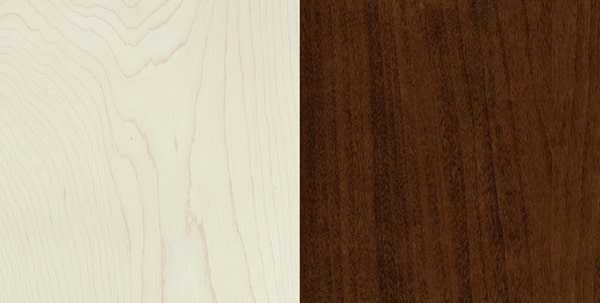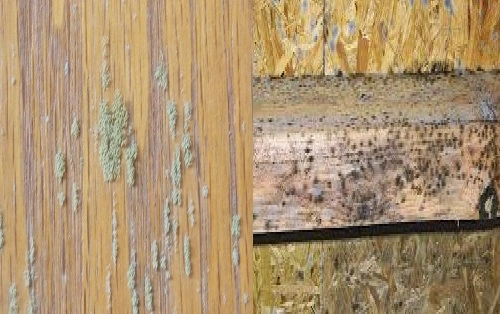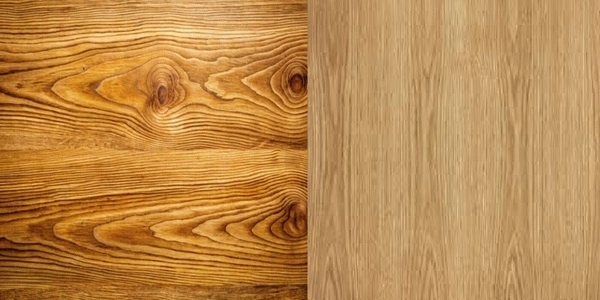When selecting wood for furniture, cabinetry, or home design, maple and cherry wood are two premium hardwood options that often come into consideration. Both are highly regarded for their beauty, durability, and versatility, but they differ significantly in terms of appearance, workability, cost, and best applications. Understanding their differences can help you choose the perfect wood for your project.
This article explores the characteristics, advantages, and ideal uses of maple and cherry wood, providing a detailed comparison to guide your decision.
What is Maple Wood?
Maple wood comes from maple trees, primarily hard maple (Acer saccharum) and soft maple (Acer rubrum). It is a dense, durable hardwood commonly used in furniture, flooring, and cabinetry.
Key Characteristics of Maple Wood:
1. Appearance: Maple wood is pale cream to light brown with occasional reddish or gray streaks. It has a fine, uniform grain with a smooth texture.
2. Durability: Hard maple is one of the most durable hardwoods, making it ideal for high-traffic and heavy-use applications.
3. Workability: While maple is hard and dense, it can be more challenging to work with but finishes beautifully.
4. Cost: Maple is moderately priced, offering excellent value for its durability and strength.
What is Cherry Wood?
Cherry wood comes from the American black cherry tree (Prunus serotina). Known for its rich, warm hues and smooth grain, cherry is a versatile hardwood that develops a beautiful patina over time.
Key Characteristics of Cherry Wood:
1. Appearance: Cherry starts as a light pinkish-brown color and deepens to a rich reddish-brown as it ages. It features a smooth, straight grain with occasional waves.
2. Durability: While not as hard as maple, cherry is a durable wood that is less prone to warping.
3. Workability: Cherry is easy to cut, sand, and finish, making it a favorite among woodworkers.
4. Cost: Cherry is a premium hardwood, typically more expensive than maple.
Comparison of Maple and Cherry Wood
| Feature | Maple Wood | Cherry Wood |
|---|---|---|
| Color | Pale cream to light brown, sometimes reddish | Light pinkish-brown, darkens to rich reddish-brown |
| Grain | Fine, uniform grain; smooth texture | Smooth, straight grain with occasional waves |
| Durability | Extremely hard and dense; highly durable | Moderately durable; less hard than maple |
| Workability | Harder to cut and machine; finishes well | Easy to cut, sand, and finish |
| Aging | Retains its color over time | Develops a rich patina, darkening with age |
| Cost | Moderately priced | More expensive, considered a luxury wood |
| Best Uses | Flooring, butcher blocks, high-traffic furniture | Furniture, cabinetry, and decorative items |
Advantages of Maple Wood
1. Durability: Maple’s hardness and density make it an excellent choice for high-use furniture, flooring, and countertops.
2. Uniform Grain: Its fine, consistent grain is ideal for modern and minimalist designs.
3. Light Color: The pale color of maple works well with stains, allowing it to mimic other wood species or achieve a custom look.
4. Affordability: Compared to cherry, maple is more budget-friendly while still providing a premium appearance.
Drawbacks of Maple Wood:
1. Staining Challenges: Maple can absorb stain unevenly, often requiring a wood conditioner to achieve consistent results.
2. Hardness: Its density makes it harder to work with, especially for intricate designs.
Advantages of Cherry Wood
1. Natural Warmth: Cherry’s warm, reddish tones bring a sense of elegance and timelessness to any space.
2. Aging Gracefully: Its ability to develop a deep, rich patina enhances its beauty over time, making it ideal for heirloom-quality pieces.
3. Workability: Cherry is easy to cut, shape, and finish, making it a favorite among woodworkers for intricate designs.
4. Versatility: Suitable for a variety of styles, from traditional to modern.
Drawbacks of Cherry Wood:
1. Higher Cost: As a premium hardwood, cherry wood is more expensive than many other options, including maple.
2. Softer Surface: While durable, cherry is more prone to scratches and dents compared to maple.
Best Uses for Maple Wood
1. High-Traffic Furniture: Maple is ideal for dining tables, chairs, and desks that experience daily wear and tear.
2. Flooring: Its hardness makes maple perfect for hardwood floors that need to withstand heavy foot traffic.
3. Butcher Blocks and Countertops: Maple’s dense grain and light color make it a popular choice for kitchen surfaces.
4. Modern Designs: Its uniform grain and light color work well in sleek, contemporary furniture styles.
Best Uses for Cherry Wood
1. Furniture: Cherry’s rich, warm tones make it a popular choice for bedroom sets, dining tables, and display cabinets.
2. Cabinetry: Its smooth grain and ability to develop a patina make cherry perfect for kitchen and bathroom cabinets.
3. Decorative Items: Cherry is ideal for decorative moldings, paneling, and accent pieces.
4. Heirloom Pieces: Its timeless appeal and durability make cherry wood a favorite for high-end, heirloom-quality furniture.
Cost Comparison
Maple Wood: Costs typically range from $5 to $8 per board foot, depending on the quality and type (hard vs. soft maple).
Cherry Wood: Costs range from $6 to $10 per board foot, reflecting its premium status and luxurious appearance.
Which Should You Choose?
Your choice between maple and cherry wood depends on your project’s requirements and your personal preferences:
Choose Maple If:
- You need a durable, hard surface for high-traffic or heavy-use applications.
- You prefer a light, versatile wood that can be stained to mimic other species.
- You’re working within a budget but still want a premium hardwood.
Choose Cherry If:
- You want a luxurious, warm-toned wood that ages beautifully.
- Your project involves fine woodworking or decorative furniture.
- You’re willing to invest in a high-quality, timeless material.
Conclusion
Both maple and cherry wood are exceptional choices for furniture, cabinetry, and home design, offering unique advantages. Maple stands out for its durability, light color, and modern appeal, while cherry wood is prized for its warm tones, smooth grain, and timeless elegance.
When selecting between these two hardwoods, consider your budget, the intended use of the piece, and your aesthetic preferences. Whether you opt for the strength of maple or the natural warmth of cherry, either choice will result in beautiful, long-lasting furniture or décor that enhances your home.


